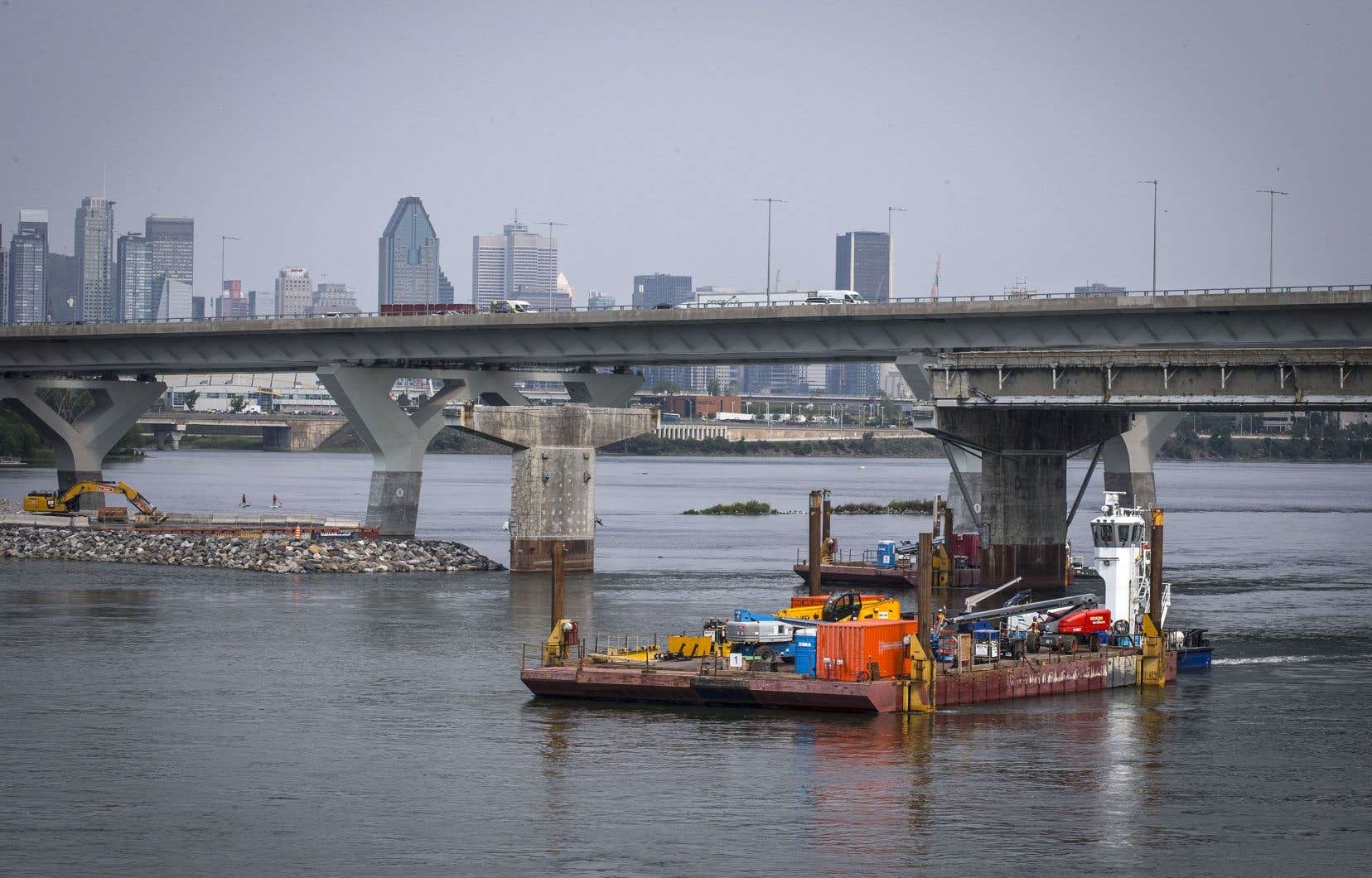Traces of the old Champlain Bridge which spanned the St. Lawrence River for several decades, between Brossard and Montreal, have now disappeared from the Montreal landscape. The dismantling of the infrastructure was completed last November, two months ahead of schedule. The COVID-19 pandemic, however, resulted in additional costs of $8.9 million, bringing the bill for the deconstruction phase to $234.6 million.
The dismantling of the bridge, closed in 2019 on the occasion of the inauguration of the Samuel-De Champlain bridge, required 41 months of work, Les Ponts Jacques-Cartier et Champlain Inc. (PJCCI) said on Thursday. The state company which managed the project specified that it had respected the initial budget of $225.7 million corresponding to the contract awarded to the Nouvel Horizon Saint-Laurent consortium in 2020.
However, he had to add to this bill the expenses attributable to the management of the pandemic, i.e. 8.9 million. “There are a lot of things in there. It’s not just masks and Purell. In fact, it was social distancing that brought a lot of elements,” explained Sandra Martel, first director of JCCBI.
JCCBI notably had to add construction trailers and sanitary facilities in addition to providing additional equipment for work carried out in a maritime environment.
Environmental issues
The project was carried out in such a way as to reduce environmental impacts and the dispersion of waste in the St. Lawrence River, recalled JCCBI. The dismantling of the bridge generated 264,000 tonnes of materials, 96% of which were recovered, authorities said.
In 2021, JCCBI also launched a pan-Canadian competition so that the pieces of the bridge could be promoted in a creative way and eleven projects were selected. Among them, the sculpture by visual artist James Kennedy made up of 15 steel panels from the bridge, furniture projects for the Marie-Victorin School Service Center and the reuse of steel from the bridge in the manufacture of watches by watchmaker and businessman Steve Christensen.
The deconstruction of the Champlain Bridge also made it possible to launch twelve study projects by researchers from different Quebec universities and the National Research Council of Canada who looked at the performance and durability of materials by analyzing the components of the Champlain Bridge. .
Three fish habitat compensation projects will also be carried out with the development of six hectares in a flood zone in Saint-Ignace-de-Loyola. The disappearance of the bridge also made it possible to free up land in L’Île-des-Soeurs and Brossard. These will be redeveloped by the end of 2025.
All these elements and the twenty contracts that have been awarded will bring the total bill for the bridge dismantling project to around $400 million, a “target that will not be exceeded,” assured Sandra Martel.
Upcoming work
JCCBI also presented on Thursday the details of the projects to come over the coming months on the infrastructures it manages.
Thus, from May to November, maintenance and repair work on the slabs will be carried out on the elevated lanes of the Bonaventure Expressway between the Victoria Bridge and the Peel Basin. Two lanes per direction will, however, remain open to traffic, but the speed of motorists must be reduced to 50 km/h.
Work will also be carried out on the Clément bridge, which connects the Bonaventure highway to Nuns’ Island, and its approaches from June to November. They will lead to the complete closure of the highway towards the Samuel-De Champlain bridge, at exit 4. In the direction of the city center, the complete closure of the entrances from Nuns’ Island to the highway will force the motorists to take a detour via Boulevard Gaétan-Laberge.
Work will also be carried out on the steel structure of the Jacques-Cartier Bridge and on the Île Sainte-Hélène pavilion which will be renovated. These construction sites will force the closure of the pedestrian sidewalk. Initially, this sidewalk will be closed between the Île Sainte-Hélène pavilion and Montreal, from February to November. From June to December, the entire sidewalk between Longueuil and Montreal will be inaccessible.
During this work, pedestrians will therefore have to fall back on the multifunctional path of the bridge and coexist with cyclists, a situation which should not cause too many impacts, believes Sandra Martel. “In general, the capacity is very good for pedestrians and cyclists on the multifunctional path,” she said, while specifying that the holding of special events, such as Monday’s eclipse, could cause some congestion. on this track.
